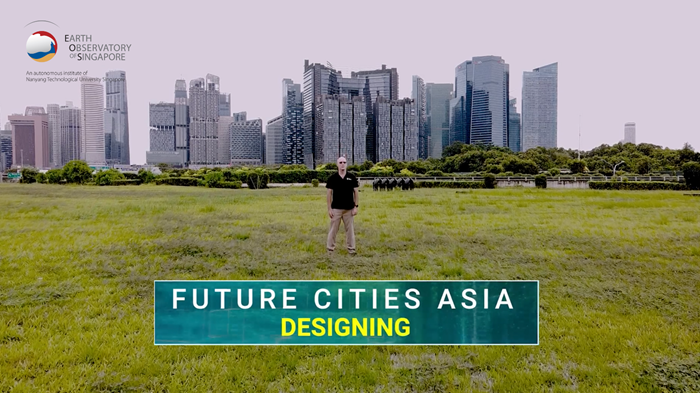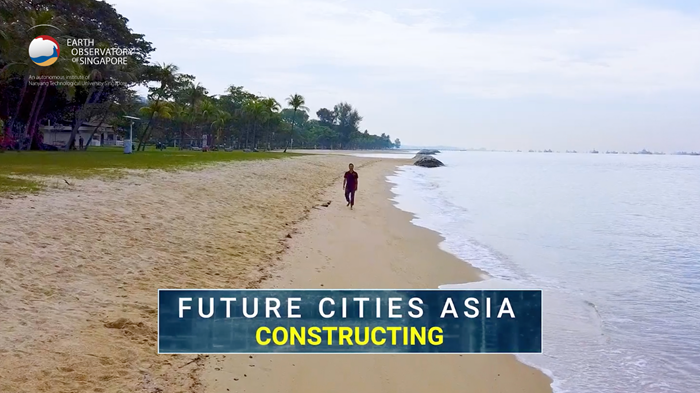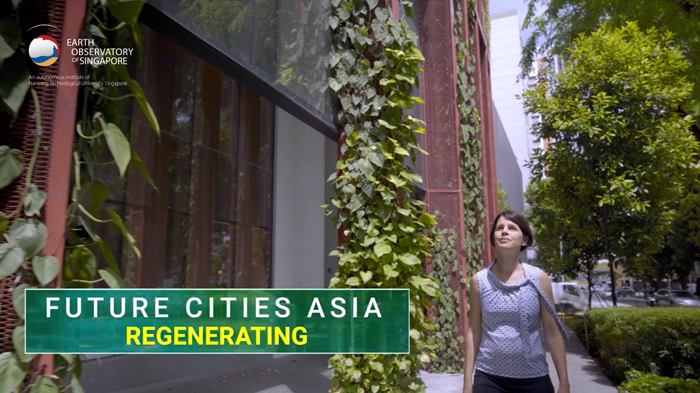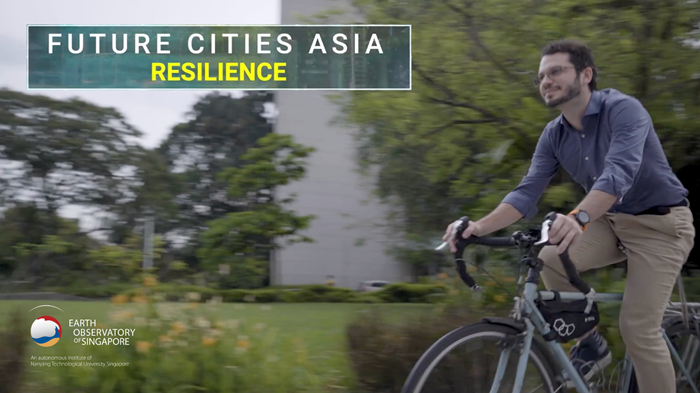Future Cities Asia
By 2050, we will need 1.5 billion more habitats across Southeast Asia to house the population growth in big cities. This is putting tremendous pressure on how we design, build and live in cities of the future. Cities of the future will see major changes in their design, built form, ecological context, and technology advancements to deliver sustainable living in a changing climate.
Future Cities Asia looks at the challenges and solutions led by science, engineering, architecture, landscape design and technology, and brings them into a short form documentary series by the Earth Observatory of Singapore at Nanyang Technological University Singapore.
Watch the trailer of the docu-series below.
Documentary episodes
Episode 1: Designing
Coming Soon
Designing smart and sustainable cities, buildings and infrastructure requires a deep understanding about the sub-surface below. This knowledge allows for innovative design principles to locate roads, walkways, waste, water and energy systems underground, and to create active spaces and green zones. Cities of the future must adopt circular models based on circulation of resources, such as turning waste into new resources, and considering water as a reusable commodity.
Associate Professor Adam Switzer, Professor Benjamin Horton and their collaborators are leading the discussion about smart thinking and smart ideas informed by data to address design challenges faced by cities of the future.

Episode 2: Constructing
Coming Soon
Global construction accounts for a large portion of carbon emissions, with buildings equivalent to the size of Paris being built every week. Understanding and reducing carbon emissions from this sector is vital if we want to limit the impacts of climate change and achieve net zero emissions as soon as possible. By combining science and technology at the Earth Observatory of Singapore, we are starting to shift innovation. New materials like biocement, nano-composite materials, chilled panel ceilings for healthier indoor air, as well as substantial energy savings and blockchain systems to track the footprint of construction materials are just a few examples of how bold and innovative thinking can shape the development of our smart, efficient cities of the future.
Assistant Professor Edward Park, Professor Benjamin Horton and their collaborators are leading the discussion about the construction challenges faced by future cities and the solutions they can implement for sustainable living.

Episode 3: Regenerating
Coming Soon
Nature-based solutions play a critical role in mitigating climate-induced hazards and provide many benefits to people and their habitats in megacities. Wetlands protect urban flooding, mangrove forests protect coastal zones, coral reefs dissipate storm surges, and healthy natural ecosystem contribute positively to the wellbeing of the community. Scientists are working with designers, planners and engineers to provide the data and research needed to direct the development of nature-based solutions that support energy reduction and water retention, and that contribute to the wellbeing of communities.
Assistant Professor Perrine Hamel, Professor Benjamin Horton and their collaborators are leading the discussion about regenerating cities to deliver sustainable and liveable cities of the future.

Episode 4: Resilience
Coming Soon
Building resilient cities of the future requires a better understanding of the future risks from climate change and rapid urbanisation. Urban planning that assesses where to locate a city must account for both future growth and climate hazards such as sea-level rise. For future cities to be resilient, they must be informed by solid data, long-term thinking and systems that are designed to be robust, circular and responsive. With climate change and urbanisation moving at such a fast pace, this will help us become more resilient to future disasters and impacts from climate change.
Assistant Professor David Lallemant, Associate Professor Adam Switzer, Associate Professor Sang-Ho Yun, Professor Horton and their collaborators are leading the discussion to understand, quantify, and reduce the risks faced by cities of the future.

__________
Future Cities Asia was produced by the Earth Observatory of Singapore, and was written and directed by Liz Courtney.
Special thanks to AECOM Singapore, School of Civil and Environmental Engineering at Nanyang Technological University Singapore, CapitaLand, Housing and Development Board Singapore, Oasia Hotel Sentosa, Oasia Hotel Chinatown, Resilient Cities Network, Nanyang Technological University Singapore, Surbana Jurong Consultants Pte. Ltd., STX Landscape Architects Singapore, The Royal Geographical Society UK, and WOHA Singapore.